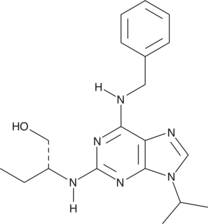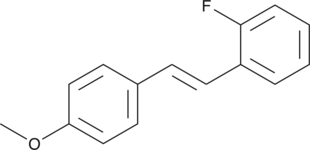Description
A potent ATP mimetic that inhibits both JAK1 and JAK2 with IC50 values of 2.7 and 4.5 nM, respectively; blocks IL-6 signaling (IC50 = 281 nM) and proliferation of JAK2V617F+ Ba/F3 cells (IC50 = 127 nM); reduces splenomegaly, decreases circulating levels of IL-6 and TNF-α, eliminates neoplastic cells, and prolongs survival in a mouse model of JAK2V617F+ MPN
Formal name: βR-cyclopentyl-4-(7H-pyrrolo[2,3-d]pyrimidin-4-yl)-1H-pyrazole-1-propanenitrile
Synonyms: INCB 018424
Molecular weight: 306.4
CAS: 941678-49-5
Purity: ≥98%
Formulation: A crystalline solid
Product Type|Biochemicals|Kinase Inhibitors|JAK Family||Product Type|Biochemicals|Small Molecule Inhibitors|Kinases||Research Area|Cell Biology|Cell Signaling|JAK Signaling




